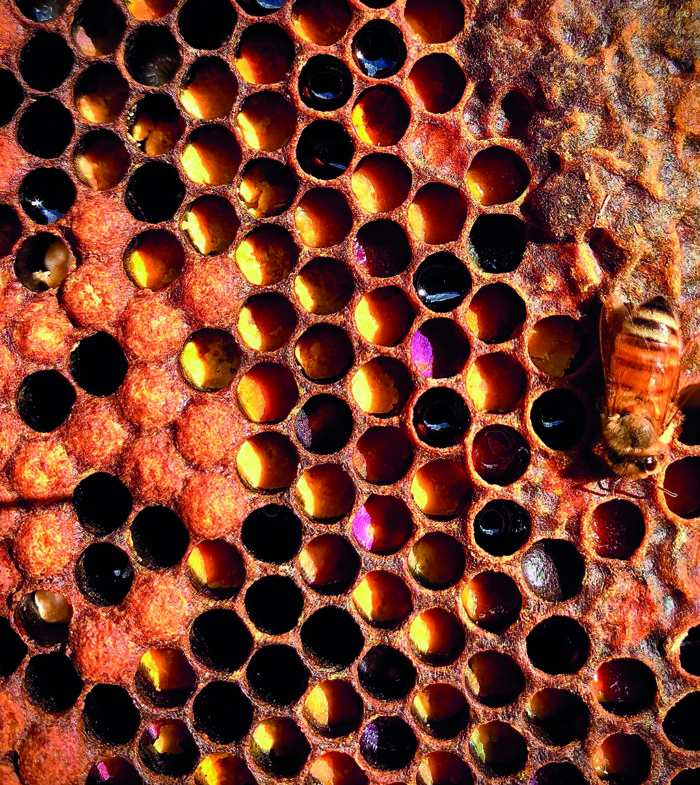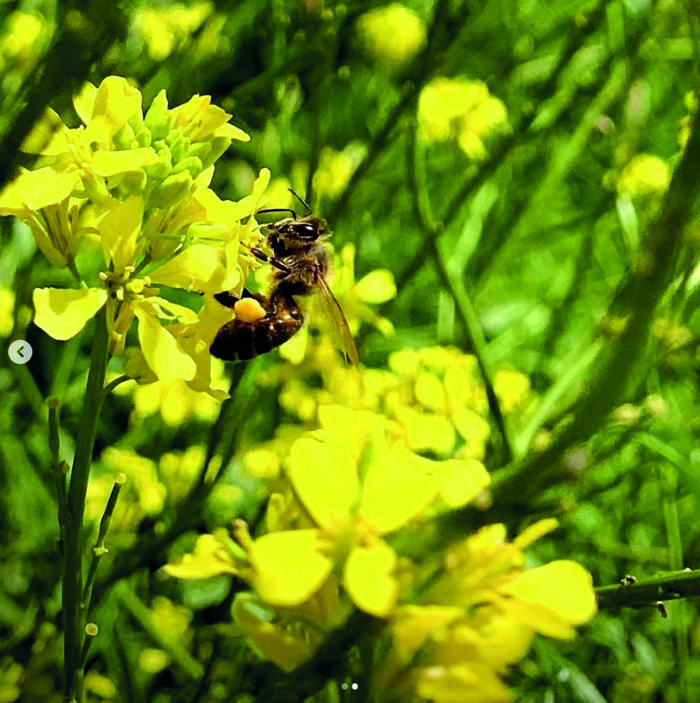
The secret life of bees
Upper Hunter beekeeper Snowy Bragg talks about the
joys and challenges of producing liquid gold.
Snowy had his first close encounter with bees when he was 10 years old. He had just picked up his first hive, a gift from a family friend. With his mum driving, he was sitting on the back seat next to the hive and got so excited, he opened the lid.
What happened next is the stuff of family lore. “The bees got out and were swarming all around us in the car,” he chuckles. “Mum berated me but neither of us got stung, which was more luck than management. There were some great expletives from mum after we stopped the car to let the bees out!”
The family had hives on and off over the years, but it was Snowy’s partner Louisa who suggested he get into bee keeping full time. They are now living on a 4,000-acre property 45 minutes east of Aberdeen in the Upper Hunter, with their two sons and a daughter.
“When I first got here, 25 years ago, the land hadn’t been cleared and the property wasn’t in great shape. There were two fallen-down houses, so I had to rebuild a home. But I liked it here and the resources were great. However, with five of us and one bathroom, we are running out of room again,” he says.
Snowy and Louisa run 138 hives on the property and sell their “Made by B” honey locally in cafes, newsagencies and bookshops. They are one of just a handful of commercial beekeepers in NSW who don’t move their hives around to boost honey production volumes.
“Many larger commercial beekeepers scout for the best hive locations across New South Wales, Queensland, and Victoria, then load their hives on a truck and follow the crops, generally staying just two or three weeks in one place,” Snowy explains.
“But I don’t need to because we’ve got such a great natural diversity of shrubs and trees. We don’t use chemicals either.”




What varieties of honey does he produce? “We just produce honey,” he replies. “We can never predict the taste. It’s up to the bees, what plants are flowering, and the weather conditions. The more variety in plants, the better.
“We get customers saying, ‘this one’s fantastic, I want more of that’. But it’s a natural product and we can’t artificially recreate a specific flavour.” The Made By B label on the jars sums it up perfectly: this is honey made by bees, and nobody else.
“Whatever comes out of the frame goes into a holding tank and it blends naturally over the next week, when impurities float to the surface and get removed,” says Snowy, explaining
the process. Packaging of the three to four tons of honey he produces per year is a drawn-out, manual exercise. “You sit there for hours, filling jars. You go to bed at night and in your head, you are still screwing on lids,” he smiles.
“My mother is our most critical customer and tells me if she doesn’t like a particular jar.
“‘Sell that to someone else’, she says. She loves honey from Yellow Box (Eucalyptus Melliodora), but unfortunately we haven’t had a decent season for a couple of years. w
“Last November, Yellow Box was flowering really well, but then we got about 17 inches of rain, the bees couldn’t fly for weeks, and we didn’t get any honey out of it,” says Snowy who still considers himself lucky. “We had bees who got caught in the smoke of the bushfires and couldn’t navigate their way back. They got lost and perished and there was nothing we could do about it.
“But we didn’t lose any equipment or hives in the bushfires. I know of guys who lost their entire business, replaced everything, only to lose it all again two years later in the floods.”
The bee cycle of life
While the ups and downs of beekeeping require lots of hard work Snowy wouldn’t trade it for the world. “There’s always something new, no two seasons are ever the same. Even guys with 40, 50 years’ experience are still learning something new every day,” he says.
A constant learner, Snowy is a treasure trove of information on everyday bee life.
“During winter, the bee population is at its lowest They hibernate within the hive, forming a ball to try and keep warm. Come spring, the queen will start to lay, and numbers will explode, especially if there’s a lot of pollen which is the protein part of the bees’ diet, the bee equivalent of steak and eggs.
“As a result, you will get more worker bees out there, with more nectar and pollen coming in.”
Read more about Snowy and the Bees in the Spring issue of Hunter & Coastal Lifestyle Magazine or subscribe here.
Story by Cornelia Schulze, photography by Louisa Bragg

